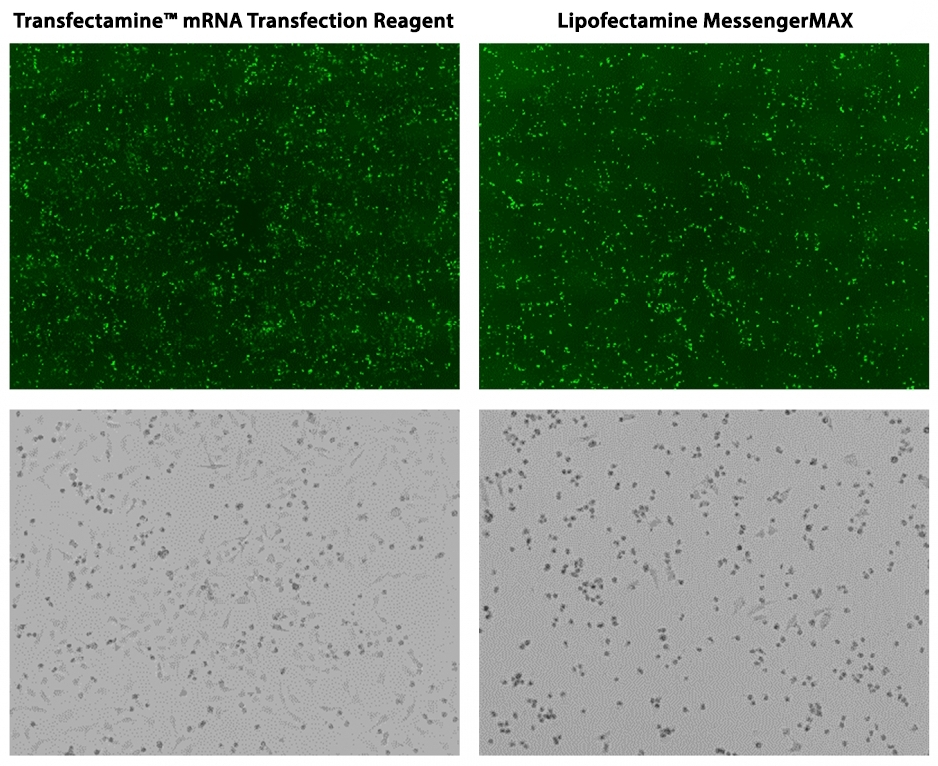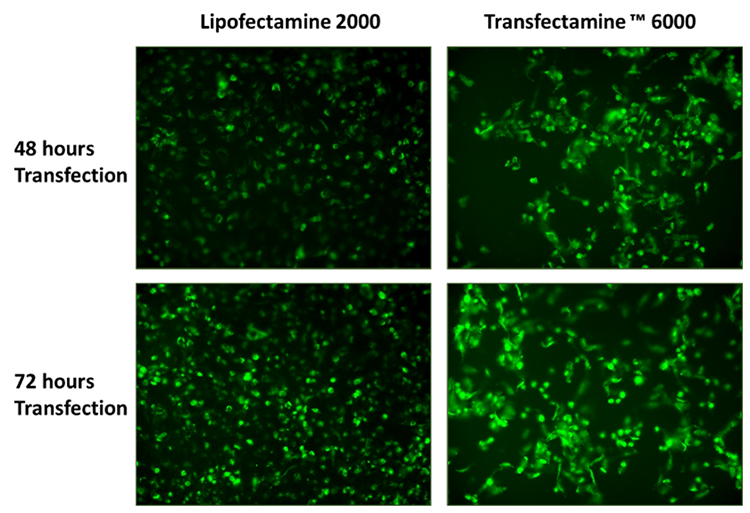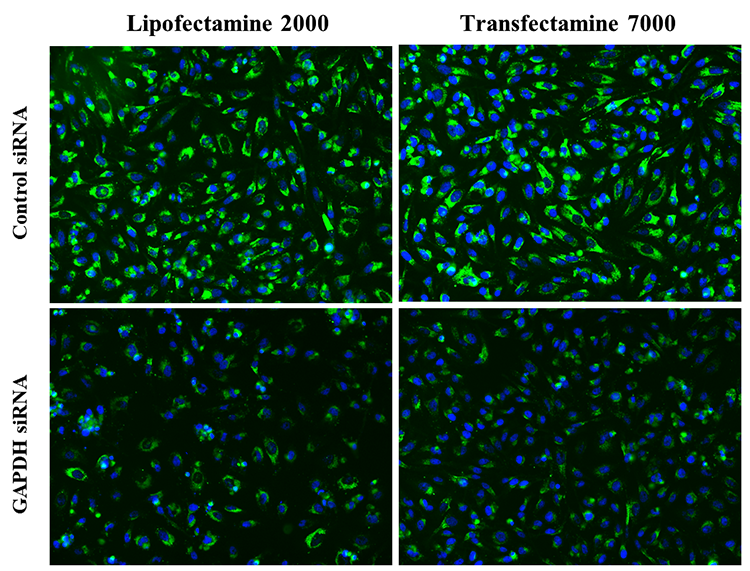


Chemical-based transfection uses materials ranging from inexpensive calcium phosphate and organic dendrimers to advanced ones such as lipofection (lipid transfection) reagents like Lipofectamine™ and Transfectamine™, but must be optimized to minimize cell death.
Everything from recommended cell confluence to cell line optimization is mentioned in AAT Bioquest's FAQs, as well as sample protocols, datasets, and other resources and tools to improve experimental performance.
Click To Explore Transfection Reagents Catalog
• Transfectamine™ 5000: DNA: Adherent or Suspension Cells

Figure 1. Transfection efficiency comparison in HeLa cells using Transfectamine™ 5000, Lipofectamine 2000, and Lipofectamine 3000 reagents. Each reagent was used to transfect HeLa cells in a 96-well format, and GFP expression was
analyzed 24 hours post-transfection. Transfectamine™ 5000 transfection reagent provided higher GFP transfection efficiency compared to Lipofectamine 2000 and Lipofectamine 3000 reagents.

Figure 2. Transfection efficiency comparison (Upper panel) and cellular toxicity comparison (Bottom panel) in HeLa cells. Although transfection efficiency was similar for Lipofectamine MessengerMAX and Transfectamine™ mRNA Transfection Reagent, most Lipofectamine MessengerMAX transfected samples were scrambled, whereas cells transfected with Transfectamine™ mRNA Transfection Reagent looked much healthier (bottom panel).
• Transfectamine™ 6000 CRISPR: Various CRISPR/Cas9 systems

Figure 3. Comparison of transfection efficiency in HeLa cells for CRISPR-Cas9-GFP plasmid using Transfectamine™ 6000 CRISPR Transfection Reagent and Lipofectamine 2000. Both reagents were used to transfect HeLa cells in a 96-well format, and GFP expression was analyzed 48 and 72 hours post-transfection. Transfectamine™ 6000 CRISPR Transfection reagent provided higher GFP transfection efficiency than Lipofectamine 2000.
